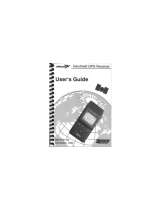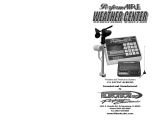
GPS 400 Pilot’s Guide and Reference
190-00140-60 Rev. H
iii
TABLE OF CONTENTS
SECTION 1: INTRODUCTION ...........................................1-1
1.1 Accessories and Packing List ................................. 1-1
1.2 Key and Knob Functions ......................................... 1-2
1.3 Takeoff Tour ............................................................... 1-5
SECTION 2: NAV PAGES .................................................. 2-1
2.1 Main Page Groups .................................................... 2-1
2.2 NAV Page Group ....................................................... 2-2
2.3 Default NAV Page ..................................................... 2-2
2.4 Map Page ................................................................... 2-5
2.5 TERRAIN Page .......................................................... 2-15
2.6 NAV/COM Page ........................................................ 2-18
2.7 Position Page ..........................................................2-20
2.8 Satellite Status Page ............................................. 2-23
2.9 Vertical Navigation Page ...................................... 2-25
SECTION 3: DIRECT-TO NAVIGATION .........................3-1
3.1 Overview .................................................................... 3-1
SECTION 4: FLIGHT PLANS.............................................. 4-1
4.1 Flight Plan Catalog Page ........................................ 4-1
4.2 Active Flight Plan Page ........................................... 4-9
SECTION 5: PROCEDURES ............................................... 5-1
5.1 Approaches, Departures, and Arrivals ................. 5-1
5.2 Non-Precision Approach Operations .................... 5-3
5.3 Points to Remember for All Approaches........... 5-26
SECTION 6: WPT PAGES ....................................................6-1
6.1 WPT Page Group ....................................................... 6-1
6.2 Airport Location Page ............................................. 6-4
6.3 Airport Runway Page .............................................. 6-5
6.4 Airport Frequency Page .......................................... 6-6
6.5 Airport Approach Page ........................................... 6-8
6.6 Airport Arrival Page ............................................... 6-10
6.7 Airport Departure Page ........................................ 6-12
6.8 Intersection Page ................................................... 6-13
6.9 NDB Page .................................................................. 6-14
6.10 VOR Page ................................................................ 6-14
6.11 User Waypoint Page............................................. 6-15
SECTION 7: NRST PAGES ................................................. 7-1
7.1 NRST Page Group .....................................................7-1
7.2 Nearest Airport Page ............................................... 7-4
7.3 Nearest Intersection Page ...................................... 7-5
7.4 Nearest NDB Page .................................................... 7-6
7.5 Nearest VOR Page .................................................... 7-6
7.6 Nearest User Waypoint Page ................................. 7-7
7.7 Nearest Center (ARTCC) Page ................................7-8
7.8 Nearest Flight Service Station (FSS) Page .......... 7-8
7.9 Nearest Airspace Page ............................................ 7-9
SECTION 8: AUX PAGES .................................................... 8-1
8.1 AUX Page Group ....................................................... 8-1
8.2 Flight Planning Page ................................................ 8-2
8.3 Utility Page .............................................................. 8-12
8.4 Setup 1 Page ........................................................... 8-20
8.5 Setup 2 Page ........................................................... 8-28
SECTION 9: TERRAIN .......................................................... 9-1
9.1 Introduction ............................................................. 9-1
9.2 TERRAIN Page .......................................................... 9-3
9.3 TERRAIN Alerts ........................................................ 9-4
9.4 Database Information for TERRAIN .................... 9-9
SECTION 10: ADDITIONAL FEATURES ..................... 10-1
10.1 Traffic Information Service (TIS) ...................... 10-1
10.2 GTS 8XX Traffic Systems ..................................10-11
10.3 Weather Data Link Interface ........................... 10-18
SECTION 11: FAULT DETECTION & EXCLUSION ..11-1
11.1 Detection and Exclusion ..................................... 11-1
11.2 Pre-Departure Verification of FDE .................... 11-2
SECTION 12: MESSAGES, ABBREVIATIONS, &
NAV TERMS ............................................................................ 12-1
12.1 Messages ................................................................ 12-1
12.2 Abbreviations ........................................................ 12-8
12.3 Navigation Terms ............................................... 12-11
Appendix A: Data Card Use ..........................................A-1
Appendix B: Specifications ...........................................B-1
Appendix C: Troubleshooting Q & A ........................C-1























